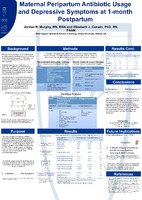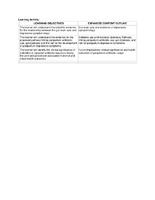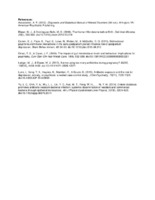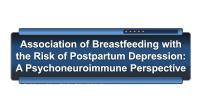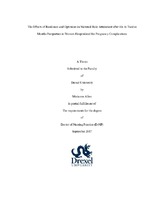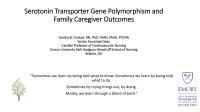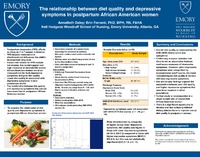| dc.contributor.author | Murphy, Jordan R. | en |
| dc.contributor.author | Corwin, Elizabeth J. | en |
| dc.date.accessioned | 2017-06-19T20:19:43Z | |
| dc.date.available | 2017-06-19T20:19:43Z | |
| dc.date.issued | 2017-06-19 | |
| dc.identifier | INRC17PST418 | en |
| dc.identifier.uri | http://hdl.handle.net/10755/621533 | |
| dc.description | <p>Event Theme: Influencing Global Health Through the Advancement of Nursing Scholarship</p> | en |
| dc.description.abstract | <p><strong><strong>Purpose: </strong></strong>The gut-brain-axis is a bidirectional signaling pathway between the gut microbiome and stress response systems of the brain including the hypothalamus, and is increasingly being studied for its role in affecting mood. Antibiotic exposure can contribute to a dysbiotic, or abnormal gut microbiome, by altering the microbial composition, and this is suggested as a mechanism for the increased risk of depressive symptoms in non-pregnant, non-postpartum persons. The immunological, metabolic, and endocrine changes that occur during pregnancy influence the overall functioning of the gut microbiome and represent a potentially robust pathway for exploring the effect of antibiotic-induced gut dysbiosis as a contributing factor in the development of postpartum depression (PPD).</p>
<p>Our lack of knowledge regarding the relationship between gut dysbiosis related to the perinatal use of antibiotics and the subsequent development of depressive symptoms postpartum is especially important given conservative estimates that greater than 40% of women are administered antibiotics during the perinatal period for treatment of a known infection or prophylactically to prevent an infection. While antibiotic use decreases the risk of infection in both mothers and infants, scientists have yet to consider the potentially negative consequences of antibiotic exposure during that time. Thus, we sought to determine the relationship between antibiotic use during the perinatal period and through the first 14 days postpartum and depressive symptoms at 1-month postpartum, the time identified in the DSM-V as diagnostic of PPD.</p>
<p><strong>Methods: </strong>A secondary data analysis was conducted on 125 women from a prospective pregnancy cohort. Pregnant women in the third trimester were enrolled into the study and provided demographic characteristics and health history. Each woman completed questionnaires including the Edinburgh Postnatal Depression Scale (EPDS) at that time, and 1- and 2-weeks and 1-, 3-, and 6- months postpartum. Research coordinators completed a chart review to obtain clinical measures including hours in labor, premature rupture of membranes (PROM), perineal tear, and mode of delivery.</p>
<p><strong><strong>Results: </strong> </strong>A linear regression model was used to explore the relationship between antibiotic use and postpartum depressive symptoms within our cohort. Antibiotic exposure is independently predictive of 1-month postpartum depressive symptoms while controlling for age, depression history, and perineal injury (p=.038, t=2.101, CI (.080-2.750)), with the overall model explaining 11% of the variance within our cohort (p=.013, F= 3.343).</p>
<p><strong>Conclusion: </strong>We have demonstrated a need for additional studies to investigate more thoroughly the relationship between the gut microbiome, antibiotic usage, and risk for postpartum depressive symptoms. Future work in this area of research will provide new evidence and considerations for modifying clinical practice guidelines for the use of antibiotics during the peripartum period.</p> | en |
| dc.format | Text-based Document | en |
| dc.language.iso | en | en |
| dc.subject | Antibiotics | en |
| dc.subject | Gut-Brain Axis | en |
| dc.subject | Postpartum Depressive Symptoms | en |
| dc.title | Maternal peripartum antibiotic usage and depressive symptoms at one-month postpartum | en |
| dc.type | Poster | en |
| dc.rights.holder | <p>
All rights reserved by the author(s) and/or publisher(s) listed in this item record unless relinquished in whole or part by a rights notation or a Creative Commons License present in this item record.
</p><p>
All permission requests should be directed accordingly and not to the Sigma Repository.
</p><p>
All submitting authors or publishers have affirmed that when using material in their work where they do not own copyright, they have obtained permission of the copyright holder prior to submission and the rights holder has been acknowledged as necessary.
</p> | |
| dc.description.note | <p>Items submitted to a conference/event were evaluated/peer-reviewed at the time of abstract submission to the event. No other peer-review was provided prior to submission to the Henderson Repository.</p> | |
| dc.type.category | Full-text | en |
| dc.evidence.level | N/A | en |
| dc.research.approach | N/A | en |
| dc.contributor.department | Alpha Epsilon | en |
| dc.author.details | Jordan R. Murphy, BSN, RN; Elizabeth J. Corwin | en |
| dc.conference.name | 28th International Nursing Research Congress | en |
| dc.conference.host | Sigma Theta Tau International | en |
| dc.conference.location | Dublin, Ireland | en |
| dc.date.conferenceyear | 2017 | |
| dc.description.reviewtype | Abstract Review Only: Reviewed by Event Host | en |
| dc.description.acquisition | Proxy-submission | en |
